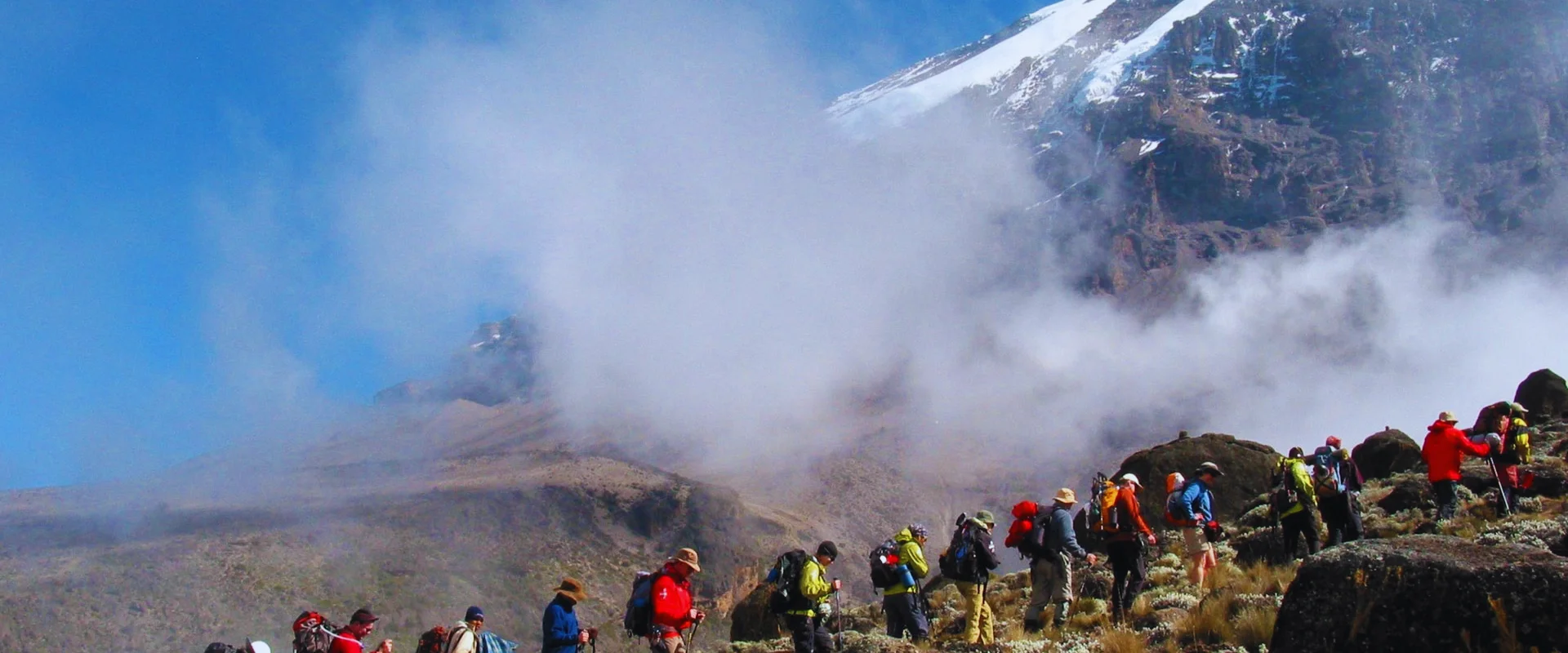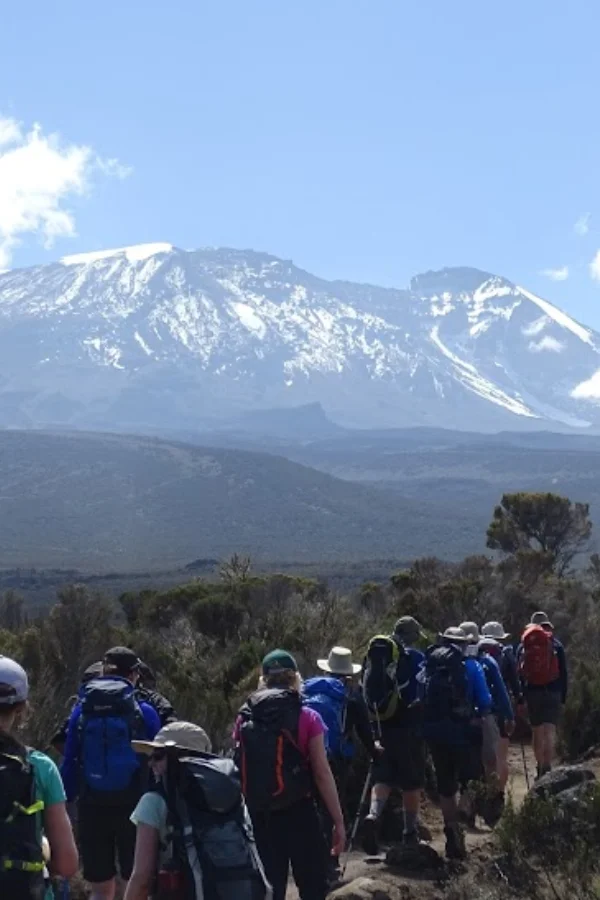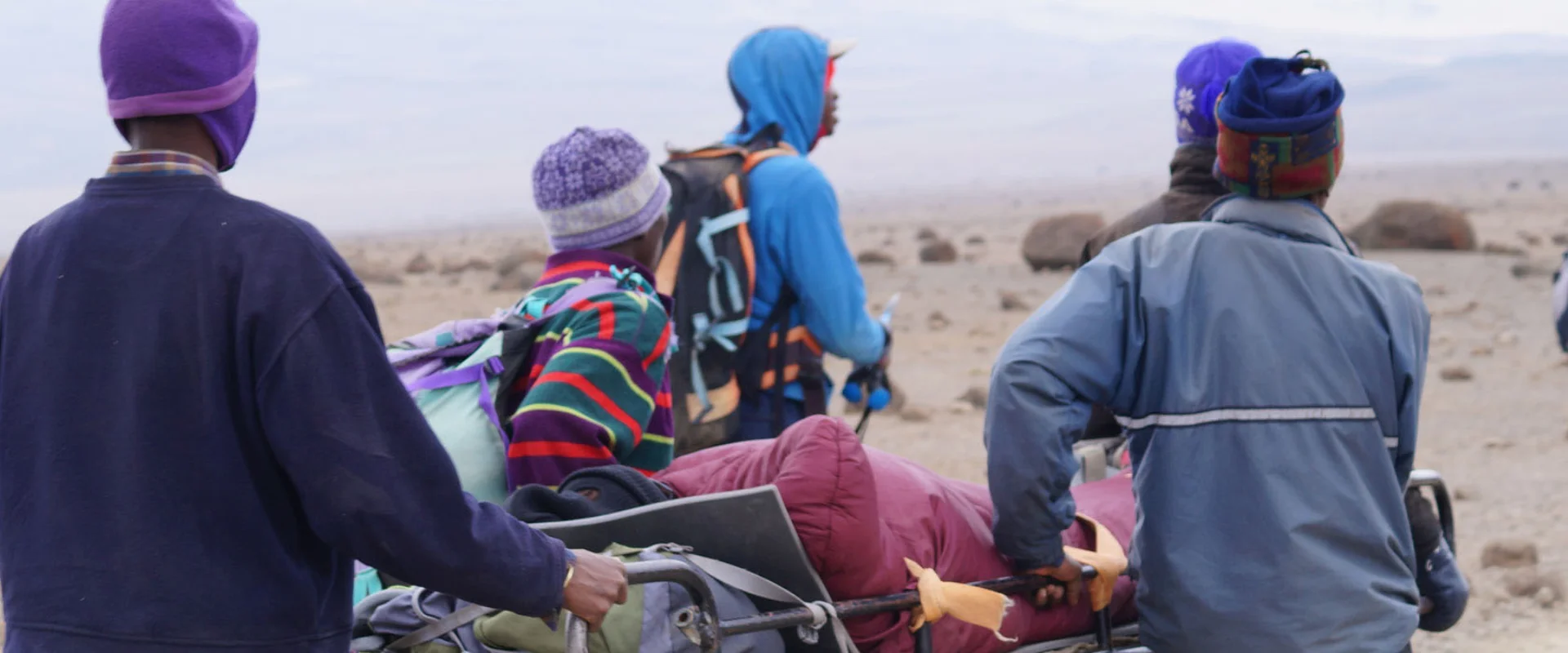Safety During Climbing Moutain Kilimajaro :
We are focus on safety when it comes on Kilimanjaro is our number one priority of both our clients and our team. The truth is every single year, climbers die on Mount Kilimanjaro due to its extreme altitude, if one is not properly monitored and treated. African Traces is the only Kilimanjaro company that trains its guides , Your guides monitor you every step of the way.
When you are on the mountain we do everything possible to ensure you remain healthy. We monitor your health closely to spot the early warning signs of problems. As a tour company we run a full Safety Management System. This begins with establishing clear safety objectives then looks at detailed risk assessments. Then we design our procedures to minimize those risks. We then listen to feedback to ensure that our safety protocols are continually improving
Every trip we provide with following:
- Oxygen For emergency use to ensuring that every trekker has easy access to emergency oxygen.
- First-aid, Trauma and Medicine Kits Fully stocked as per Wilderness First Responder guidelines and including medicine instructions.
- Pulse-oximeter To measure heart rate, blood oxygen levels and rapidly detects changes in blood oxygen level. The Head Guide checks, evaluates and documents blood oxygen levels and heart rate for each climber daily at dinner time and breakfast time.
-
Radio call Carried by all guides for daily communications with our base in Moshi.
-
Safety Briefing A full safety briefing is given by the Head Guide before each trek, covering expectations, risks, safety gear and preventative safety.
Medically Trained Team
African Traces guides have high altitude experience, are qualified High Altitude First Responders, and are trained in Wilderness Emergency Medicine. This are guarantees that we run our trips to the highest standards. Prior to your ascent of Kilimanjaro, we will make sure you understand what is provided for in our medical kit.
Our adventure First aid Kit
The truth is every single year, climbers die on Mount Kilimanjaro. Due to its extreme altitude and nonprofessional company, climbing Kilimanjaro can be quite dangerous if one is not properly monitored and treated. we are focused on safety. We understand that first and foremost, it is our main responsibility to keep all of our clients out of harms way. We recommend bring this medications with you, as shown in MEDICATION ON MOUTAIN
Our Medical kit containing the following (Wraps, Splints and Wound Coverings)
- Triangular cravat bandage
- Rolled gauze
- First-aid cleansing pads with topical anesthetic
- Homeostatic (blood-stopping) gauze
Tools and Supplies
- Paramedic shears (blunt-tip scissors)
- Standard thermometer
- Small mirror
- Medical / surgical gloves (nitrile preferred; avoid latex)
- Steel sewing needle with heavy-duty thread
- Small notepadwith waterproof pencil or pen
- Emergency heat-reflecting blanket
- Headlamp(preferred) or flashlight
- Stethoscope
- Pulse Oxymeter
Medications/Treatments
- Hand sanitizer (BKZ- or alcohol-based)
- Antacid tablets
- Throat lozenges
- Lubricating eye drops
- Loperamide tablets (for diarrhea symptoms)
- Insect sting relief treatment
- Glucose or other sugar to treat hypoglycemia
- Oral rehydration salts
- Dexamethasone
- Phenegan
- Hand sanitizer
- Biodegradable soap
- Water-treatment chemicals or water guard
- Hydrogen Peroxide
Prior the climb be properly equipped An essential part of your preparation will be to ensure that you are well equipped for your summit day Kilimanjaro gear list DAY PACK LISTS
Adequate travel insurance
Make sure that you have adequate travel and medical insurance, which will also provide you with cover for the climb up Kilimanjaro.
On The Mountain
-
Go slowly:
Pole Pole as they say in Swahili! This is also very important during your first days of climbing. Even if you feel well, slow down and enjoy the scenery. The biggest cause of altitude sickness is ascending too high too fast! The slower you hike to more time you give your body to acclimatize.
-
Drink enough water:
Make sure that you drink at least 3 to 4 liters of liquid a day preferably water. Running water on the mountain is safe to drink we treaty it. If you are not used to fresh water in nature, prevent any inconvenience by using water purification tablets. Do not forget that A functioning body water balance is one of the keys to a successful climb!
-
Walk high to sleep low:
If possible and especially on your acclimatization day walk high sleep low Try to do a short evening stroll to a higher altitude and then descend to sleep at the camp at a lower altitude.
-
Climb light:
Climb as lightly as possible; this becomes even more important on your summit night. Extra weight will slow you down and will also make breathing more difficult.
-
Packing:
Remember that you will be on the mountain for at least 5 or 6 days. You need to take enough clothing, especially socks to last for this period. Due to frequent rainfall as well as numerous streams on the routes, it is advisable to pack items individually in your bag. These individually packed items should be wrapped in plastic bags to prevent them from getting wet in case of rain or of being accidentally dropped in a stream.
-
New batteries:
Replace your head lamp and camera batteries with new ones on your summit night.
-
Wet wipes:
There is no washing water at Barafu, Kibo and Arrow Glacier camps. Wet Wipes are very useful
-
Snacks:
Take enough snacks like energy bars etc. Avoid the toffee like energy bars (as they get very hard and difficult to eat in low temperatures) but rather but the cereal type energy bars.
-
Adequate sun protection:
Wear a good quality pair of sunglasses (with UV protection) and use adequate sun protection cream with a protection factor of at least 20+.
-
Camera:
Cameras exposed to cold do not cease functioning, but remember that if you keep your camera inside your jacket and the lens becomes warm, chances are that it will form condensation when suddenly exposed to extreme cold. This condensation will freeze under conditions at the summit. Therefore, keep your camera dry at all times. Moisture will freeze at the summit which will cause your camera to stop functioning.
-
Mountain water:
The stream water high on the mountain Kilimanjaro has been tested and has been found to be fit for drinking.
Other useful tips
- Make sure all your clothes and sleeping bag are packed in plastic bag inside the duffel bag, to ensure they stay dry in the rain, even if your duffel bag is waterproof. Once something gets wet on the mountain it is difficult, even impossible to dry!
- Something good Vaseline or Vicks Vaporub are good on the summit attempt. Moist air coming from your noise or on your lips will freeze and become very uncomfortable
- Sound travel at night and many people snore on Kilimanjaro bring some ear plugs to sleep with.
- The trail is very dusty and sinus congestion is a problem with many hikers. Bring a good decongestant spray or tablet.
- Female hikers suffer more from the cold than male hikers. Hand and feet warmers are a good idea
- Travel with your most important gear as hand luggage e.g. wear your hiking boots in the plane missing luggage is a common problem.
- Bring some blister plasters, Vaseline and liner socks. If you start to get blisters it will help a lot.
- There is mobile reception on most of the mountain (except the first days on the Rongai route). If you bring your mobile, make sure you activate international roaming. Because you cannot recharge the battery, only have the phone on an hour or two daily.
- Something good Vaseline or Vicks Vaporub are good on the summit attempt. Moist air coming from your noise or on your lips will freeze and become very uncomfortable




A few months have passed, and I am still immersed in a happy and wonderful safari trip, with beautiful grasslands, lazy lions, and clever zebras... I am very grateful to the enthusiastic Marko, who planned based on my needs